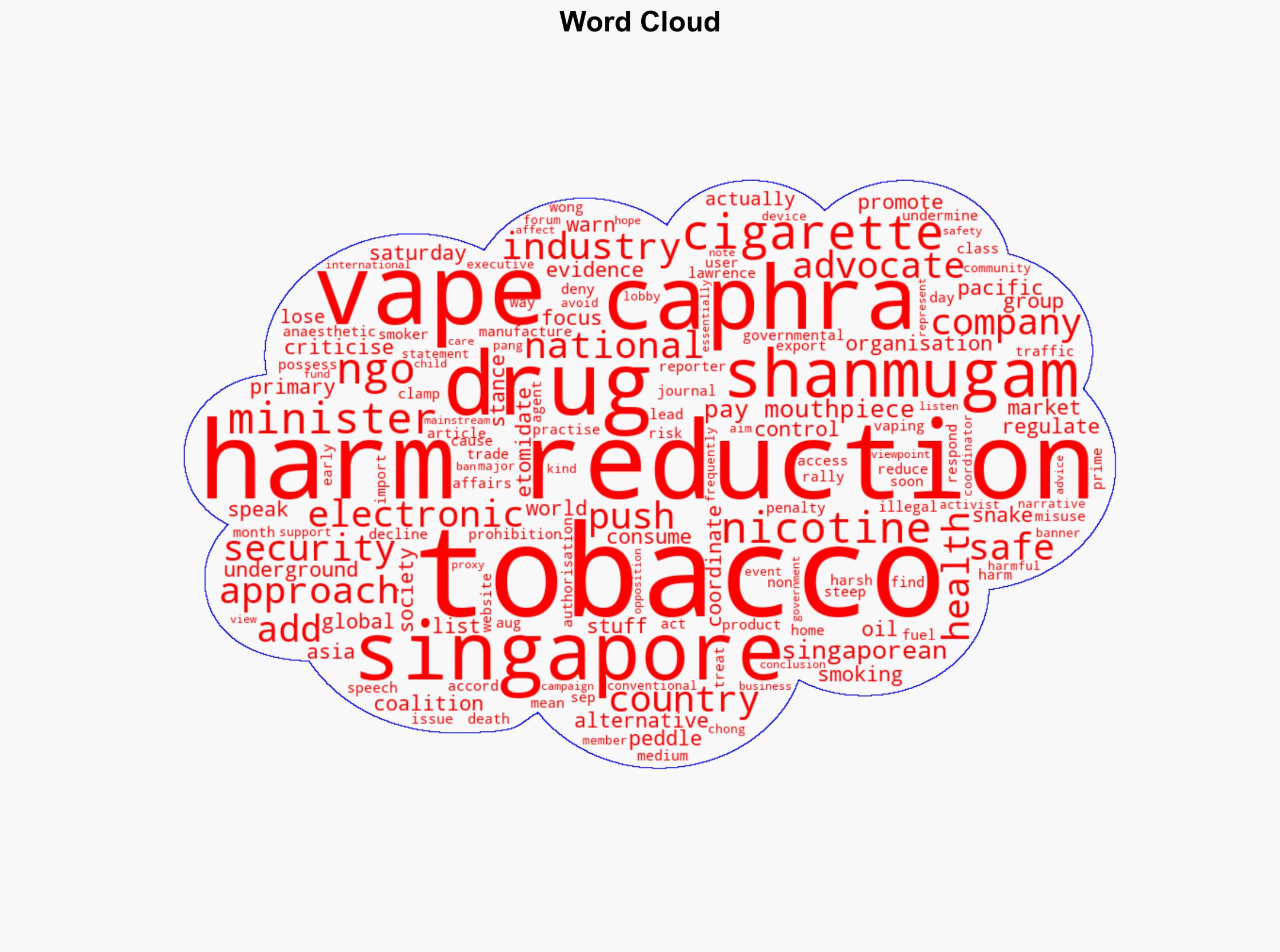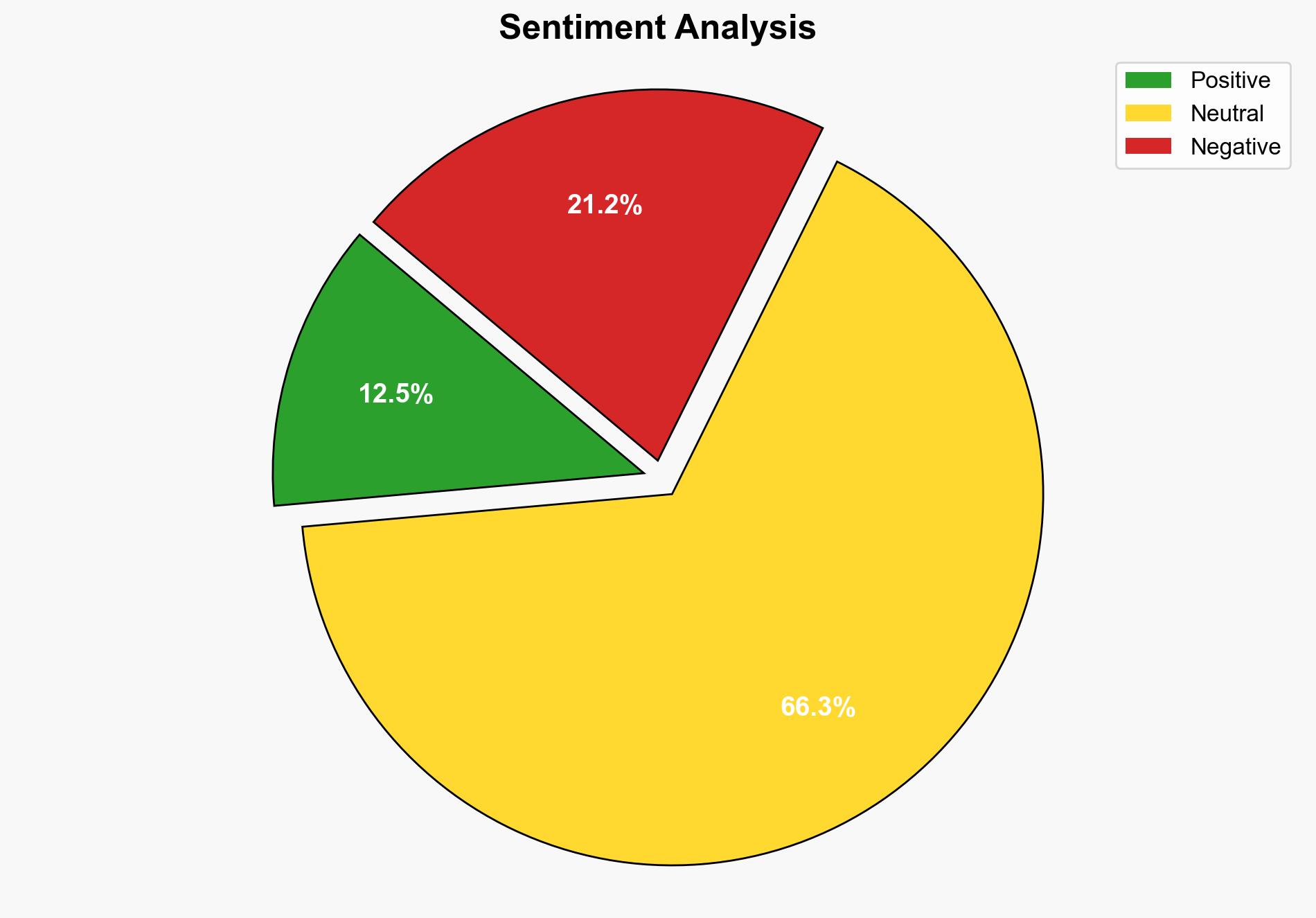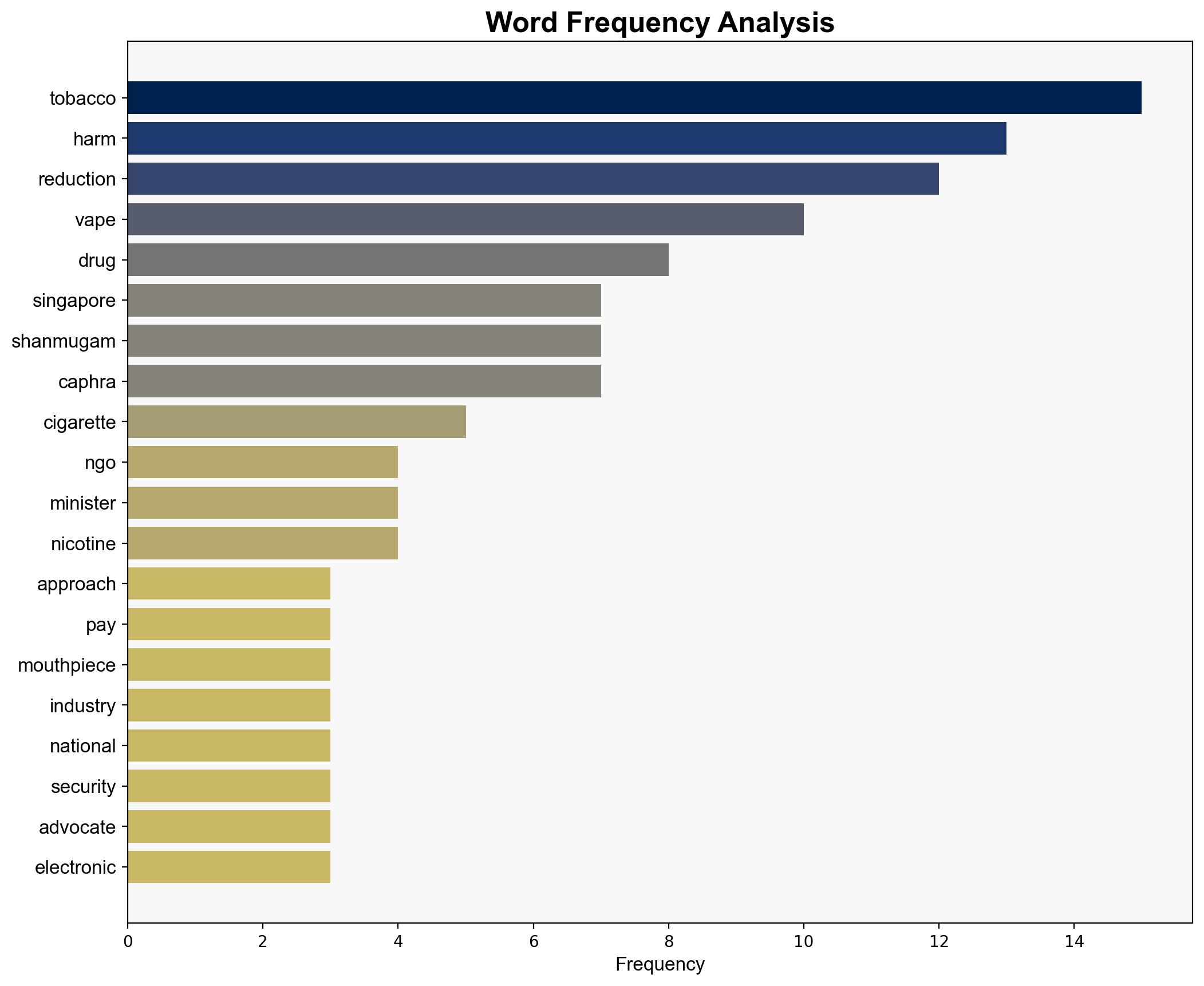Tobacco harm reduction NGO criticising Singapore’s vape approach is ‘paid mouthpiece’ for industry Shanmugam – CNA
Published on: 2025-08-30
Intelligence Report: Tobacco harm reduction NGO criticising Singapore’s vape approach is ‘paid mouthpiece’ for industry Shanmugam – CNA
1. BLUF (Bottom Line Up Front)
The most supported hypothesis is that CAPHRA, a tobacco harm reduction NGO, may have financial ties to the tobacco industry, influencing its criticism of Singapore’s vaping policies. This conclusion is drawn with moderate confidence due to the lack of direct evidence but supported by circumstantial indicators. The recommended action is to further investigate CAPHRA’s funding sources and motivations to clarify potential biases.
2. Competing Hypotheses
1. **Hypothesis A**: CAPHRA is a genuine advocate for tobacco harm reduction, criticizing Singapore’s approach based on evidence and public health concerns.
2. **Hypothesis B**: CAPHRA acts as a proxy for the tobacco industry, using harm reduction rhetoric to promote vaping products and influence policy in favor of industry interests.
Using the Analysis of Competing Hypotheses (ACH) 2.0, Hypothesis B is better supported by the circumstantial evidence of CAPHRA’s alignment with industry narratives and the financial ties suggested by Shanmugam. Hypothesis A lacks direct evidence of independent funding and motivation.
3. Key Assumptions and Red Flags
– **Assumptions**: Hypothesis A assumes CAPHRA’s motivations are purely altruistic and evidence-based. Hypothesis B assumes financial ties influence CAPHRA’s stance.
– **Red Flags**: The absence of transparency in CAPHRA’s funding sources raises questions about its independence. Shanmugam’s statements may reflect a national security bias, potentially overstating CAPHRA’s industry connections.
– **Cognitive Bias**: Confirmation bias may affect interpretations of CAPHRA’s actions, either as an industry proxy or as an independent NGO.
4. Implications and Strategic Risks
– **Economic**: If CAPHRA influences policy successfully, it could lead to increased vaping product sales, impacting public health and healthcare costs.
– **Geopolitical**: Singapore’s stance on vaping could influence regional policies, affecting ASEAN’s collective approach to tobacco control.
– **Psychological**: Public perception of vaping as a safer alternative could shift, impacting smoking rates and public health narratives.
5. Recommendations and Outlook
- Conduct a thorough investigation into CAPHRA’s funding and affiliations to determine potential biases.
- Engage with independent public health experts to assess the validity of harm reduction claims.
- Scenario Projections:
- **Best Case**: CAPHRA is found to be independent, leading to a balanced policy debate.
- **Worst Case**: CAPHRA’s influence results in relaxed regulations, increasing public health risks.
- **Most Likely**: Continued scrutiny and debate over vaping policies with incremental policy adjustments.
6. Key Individuals and Entities
– Shanmugam
– CAPHRA (Coalition of Asia Pacific Tobacco Harm Reduction Advocates)
– Lawrence Wong
7. Thematic Tags
national security threats, public health policy, tobacco industry influence, regional focus





